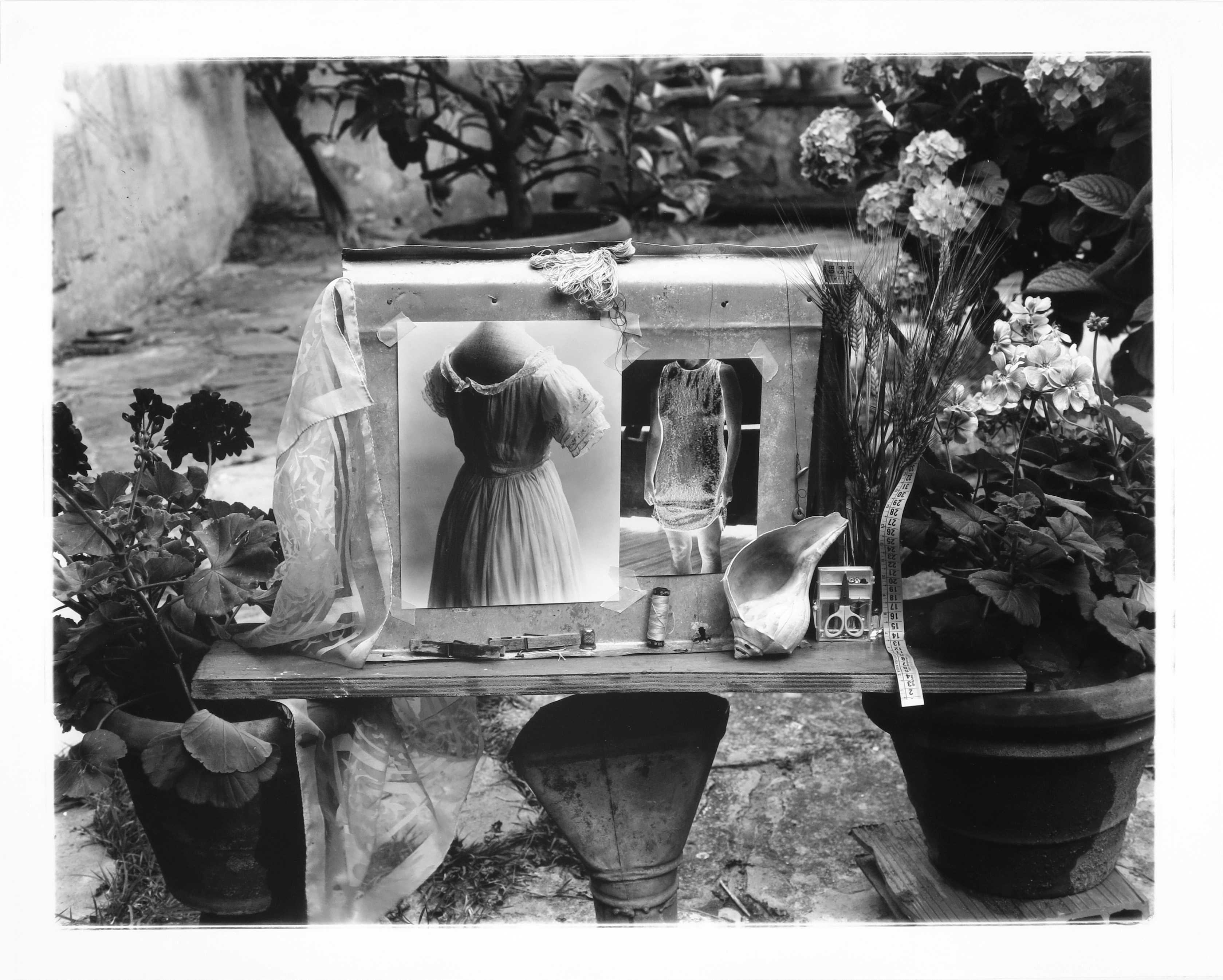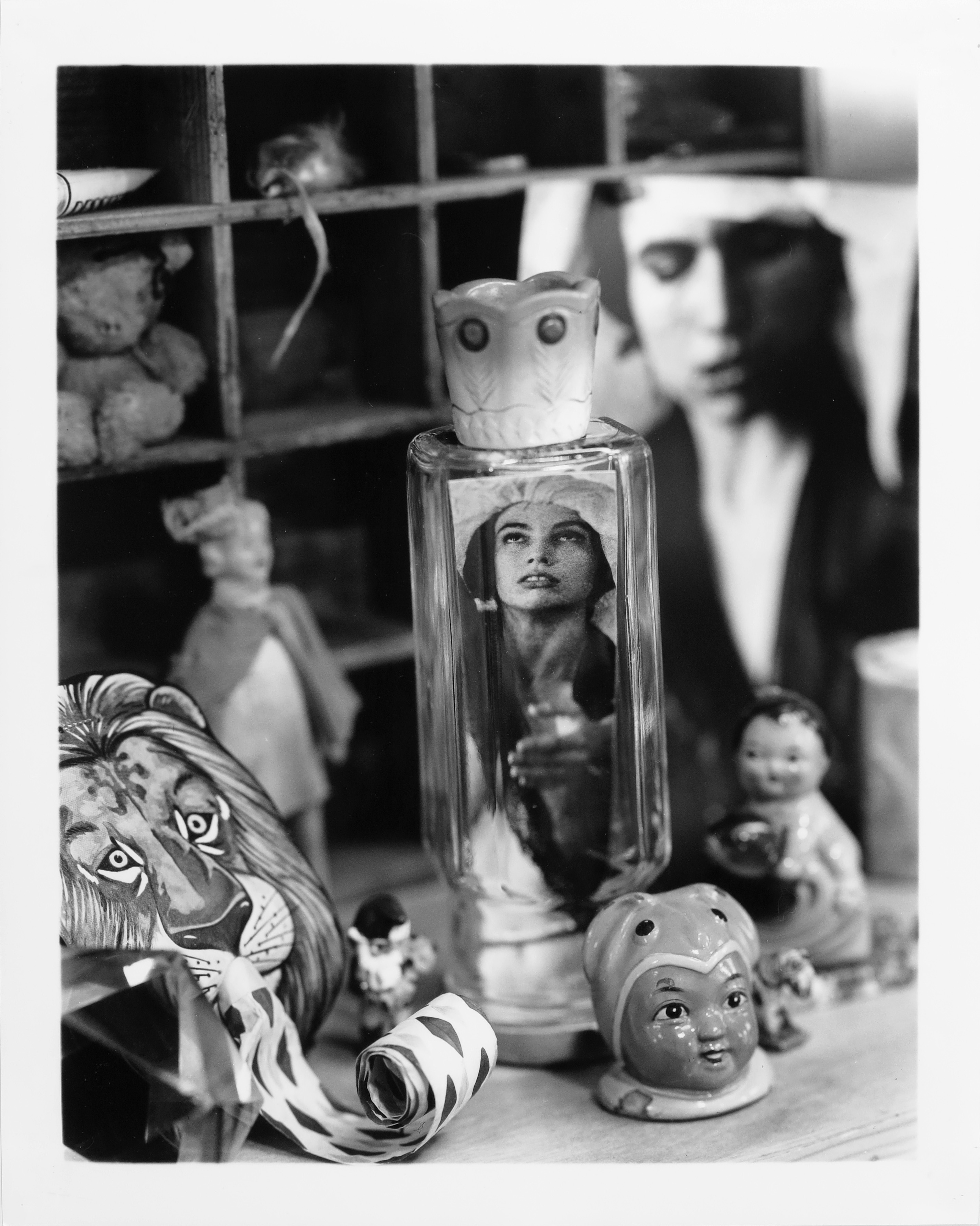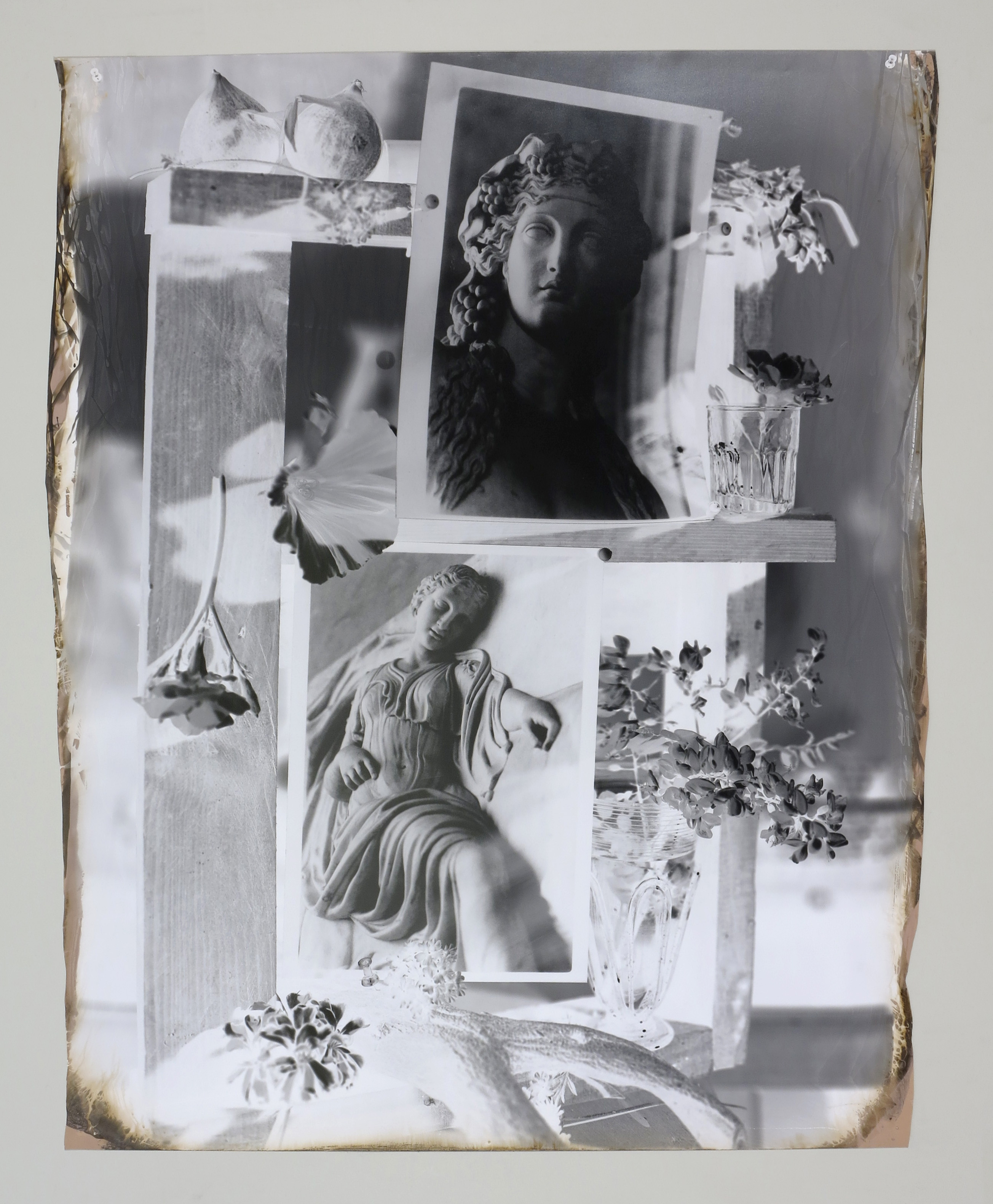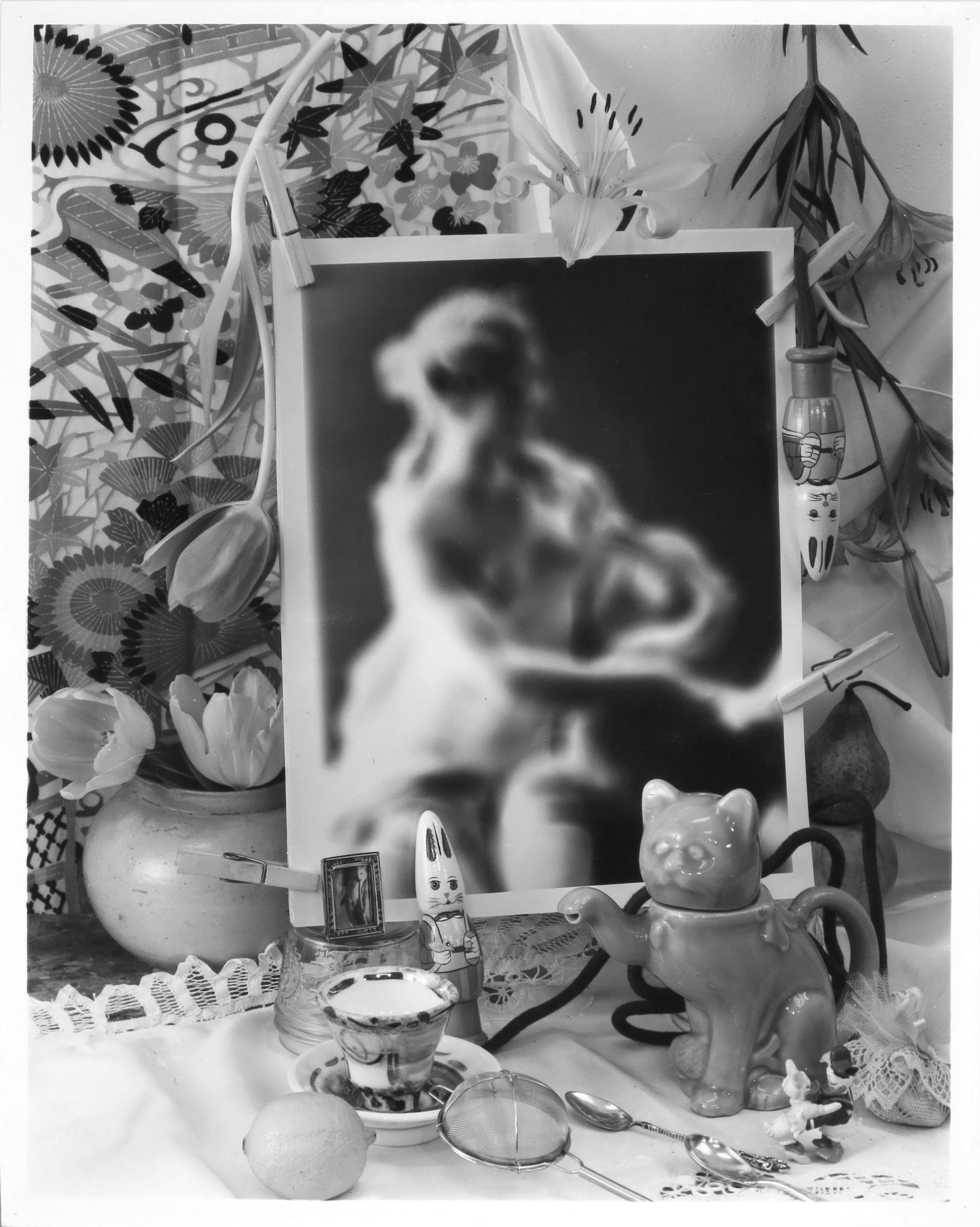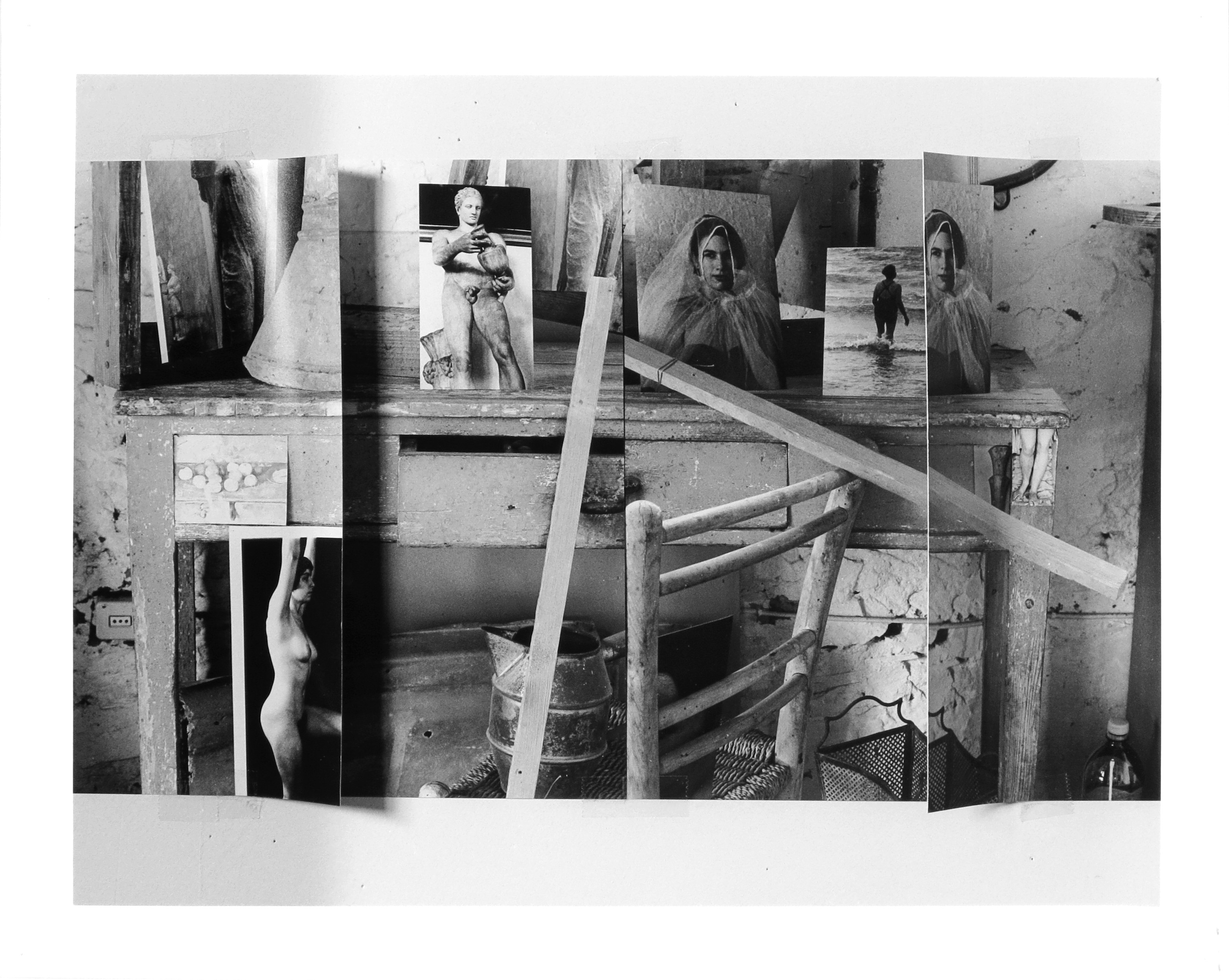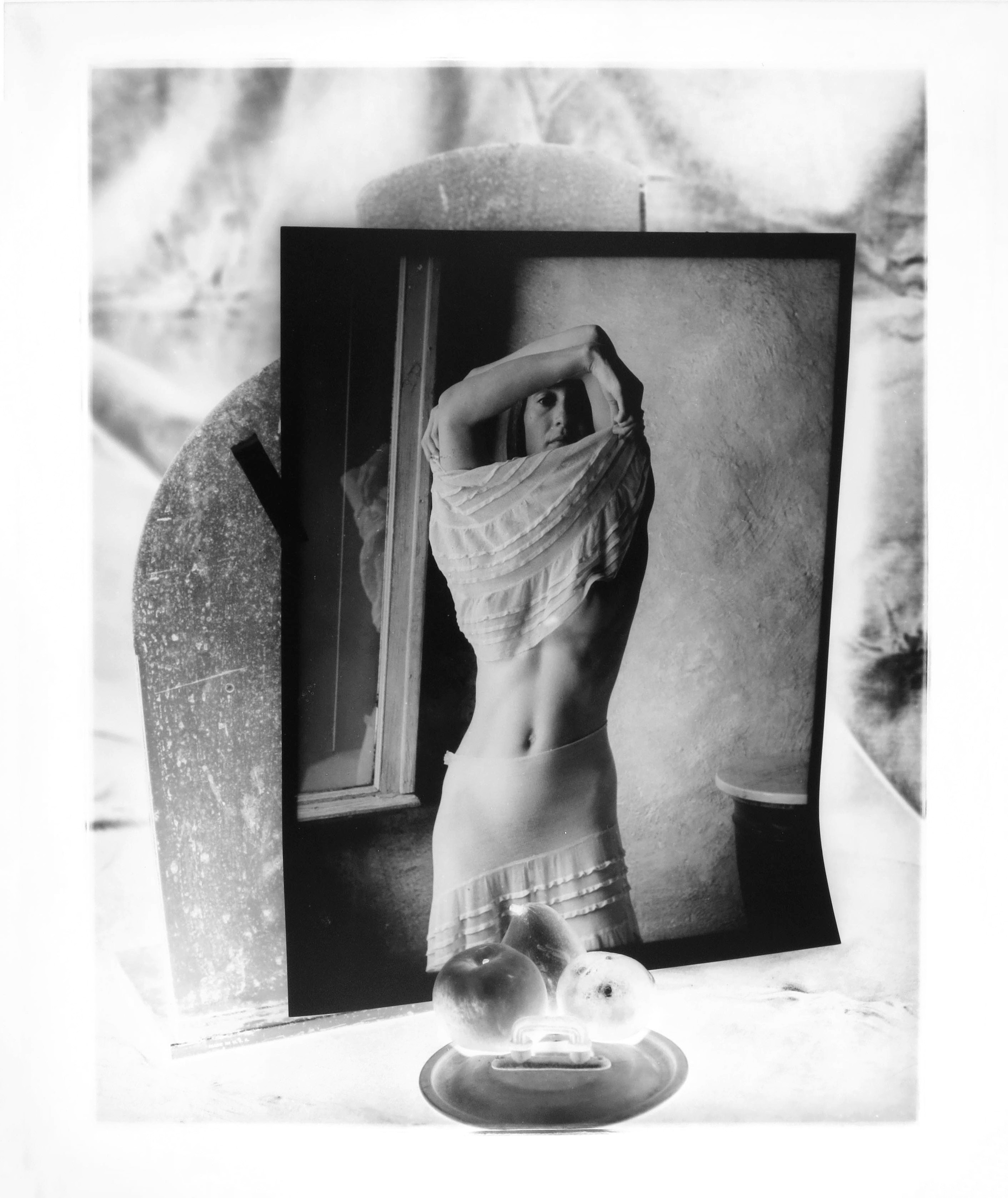George Woodman's still life photography in "Flat time is the right time: Bodies, Places and Still Life from Pier Luigi Gibelli’s Collection," 2025
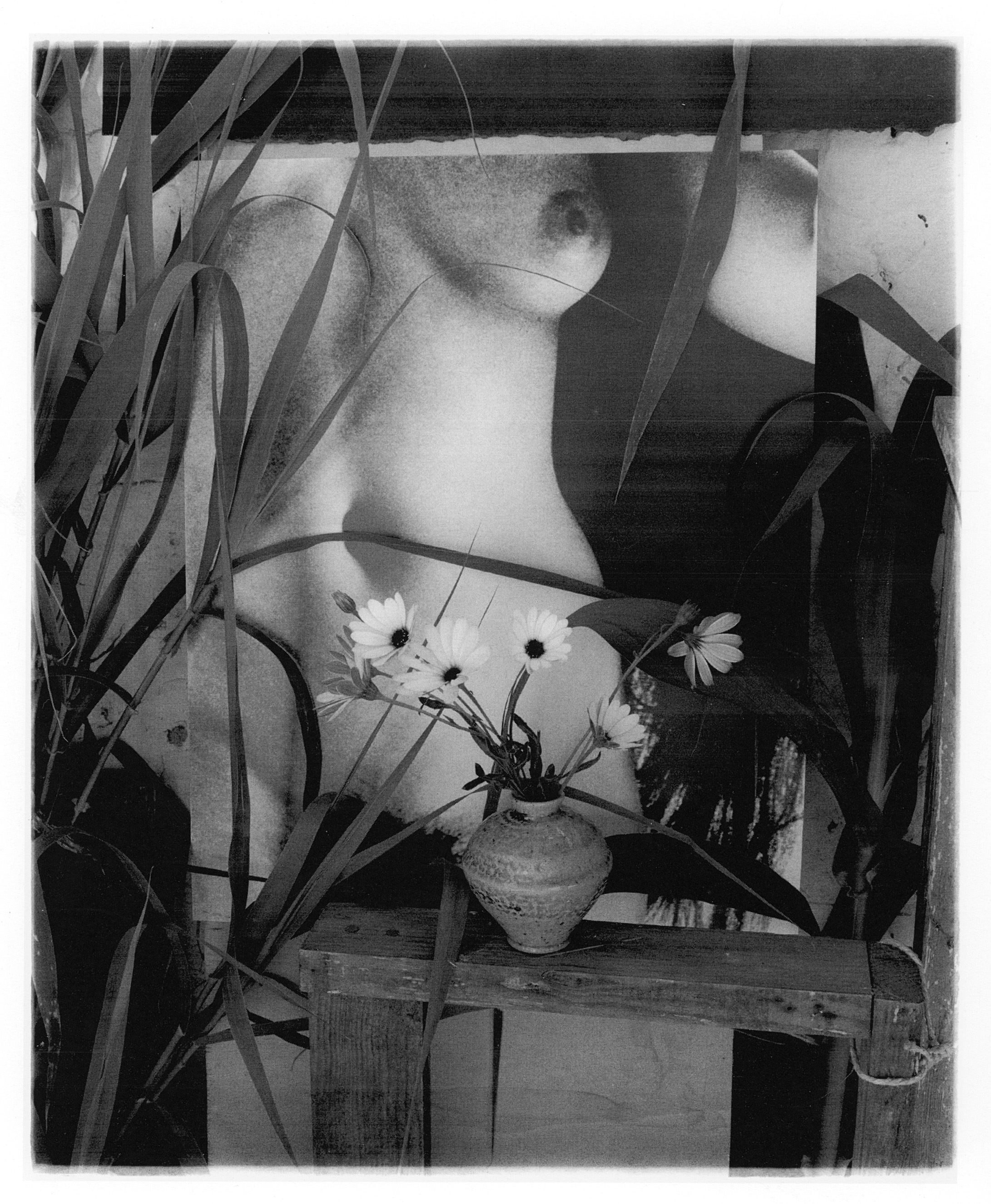
George Woodman’s still life photography bears unmistakable traces of his decades-long career as a painter: His compositions—re-photographed prints and negatives, fruits and drapery, sculptures and paintings collapsed into a single pictorial space—are at once witty and rich in art historical allusion. The deliberate arrangements of ephemera across the photographic surface reflects his painterly instincts and distinctive approach to the genre, where shallow depth of field favors compositional elegance over realism. “A lifetime as a painter,” Woodman once remarked, “has left me comfortable composing things in a very shallow space.”
The flatness of photographic surfaces—intensified by Woodman’s black-and-white gelatin silver prints—blurs the lines between what is real and what is constructed. In Flat time is the right time: Bodies, Places and Still Life from Pier Luigi Gibelli’s Collection (March 2025), editor Roberto Maggiori contends that photographing surfaces “metaphorically implies reframing photography… [and] embodies a complex interaction between reality and its two-dimensional construction, a nuance that is not always easy to discern.” For Woodman, that tension between reality and representation isn’t a limitation—but an invitation to look closer and linger longer, from one pictorial space to another.
Woodman’s Still Life, Little Vase, Vivienne—featuring a large print of a torso on an easel, partly hidden by foliage—is included in the publication alongside works by Hans Bellmer, Mario Giacomelli, and Kiki Smith, among others.


